Just Flight hat hat wie angekündigt die 146 Professional veröffentlicht. Der bei seiner Markteinführung als Flüsterjet bezeichnete Airliner, wurde Anfang der 80er Jahre als Kurzstreckenjet bei vielen Airlines eingeführt. Just Flight hat die BAe 146 vor einiger Zeit für den Prepar3D veröffentlicht, nun rückt die X-Plane Version nach. Der kleine Vierstrahler ist in Zusammenarbeit mit Thranda Design entstanden und erscheint und soll folgende Varianten mitbringen:
- Version 100-300
- 200 QC&QT
- 300 QT
- RAF CC.Mk2 & C.Mk3
Das Modell will laut Just Flights Produktseite mit 4K PBR-Texturen und einem hochdetaillierten 3D-Modell bestechen. Die Systeme sollen dabei tiefgehend modelliert sein, auf Seiten der Avionik gibt es ein funktionales FMC und ein Thrust-Management-System (TMS). Ein Review zur Prepar3D-Version hat unser Redakteur Thomas bereits letztes Jahr veröffentlicht.
Die 146 Professional für X-Plane gibt es jetzt für 70 Euro direkt im Webshop von Just Flight.
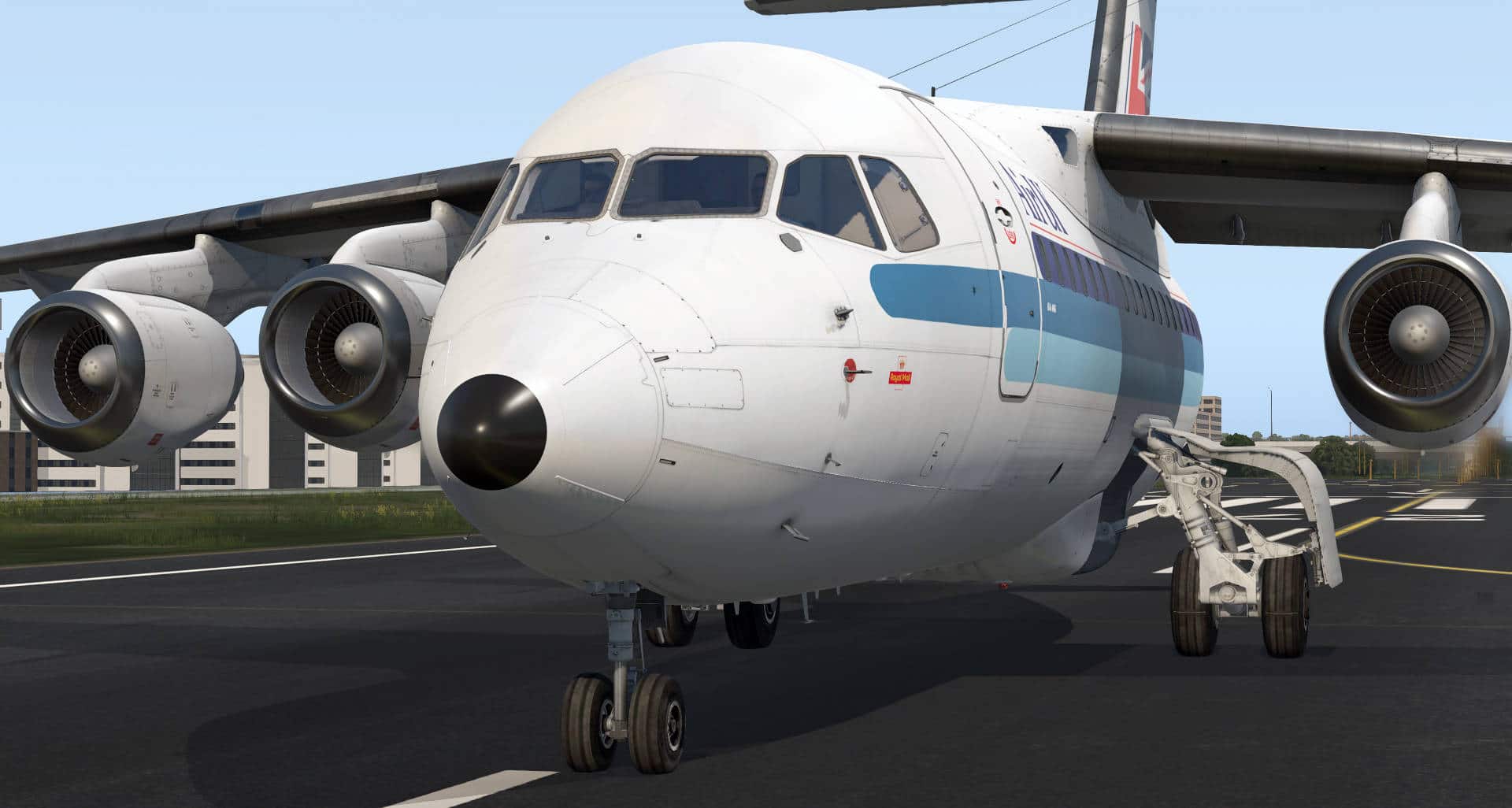
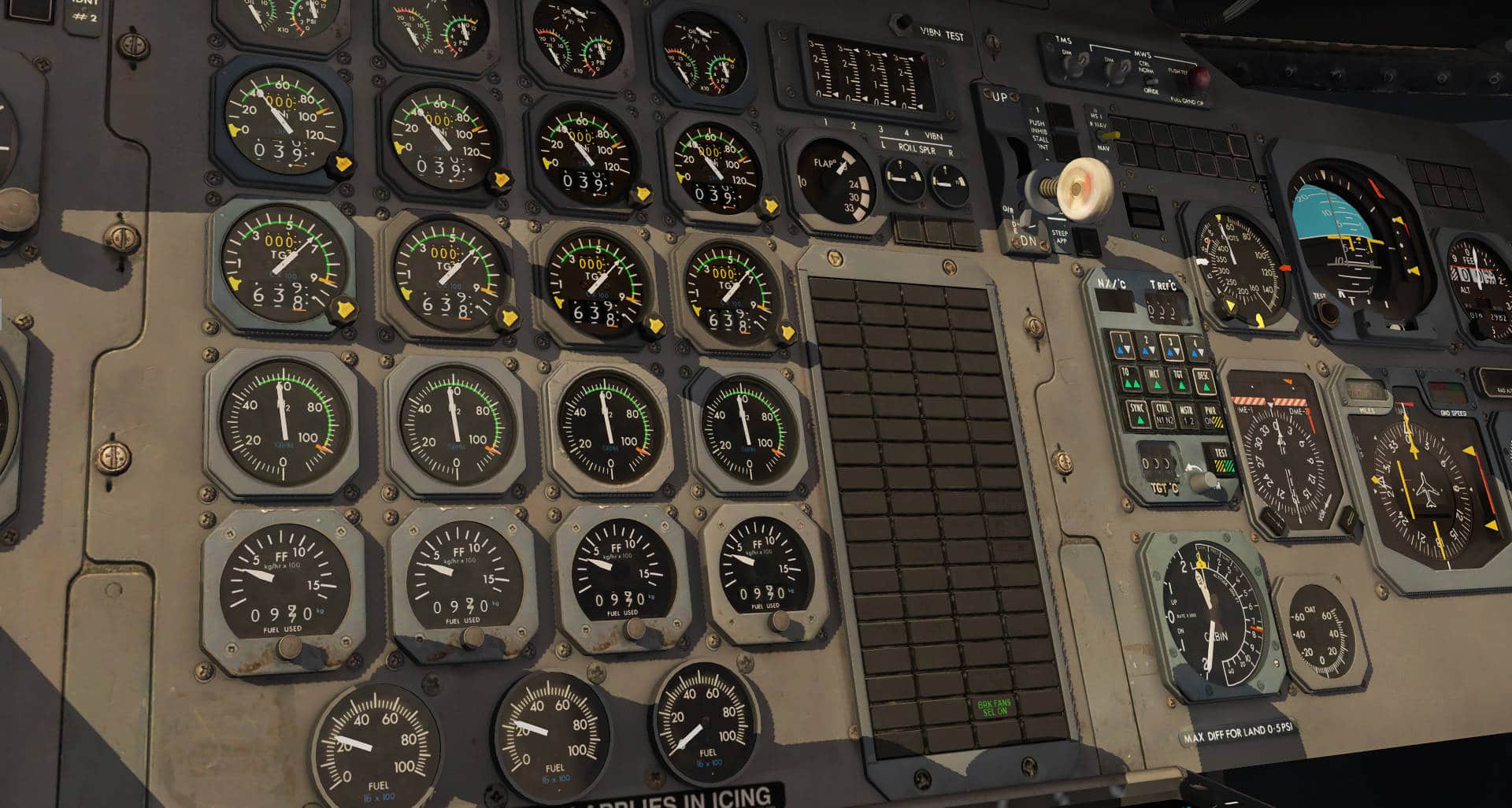
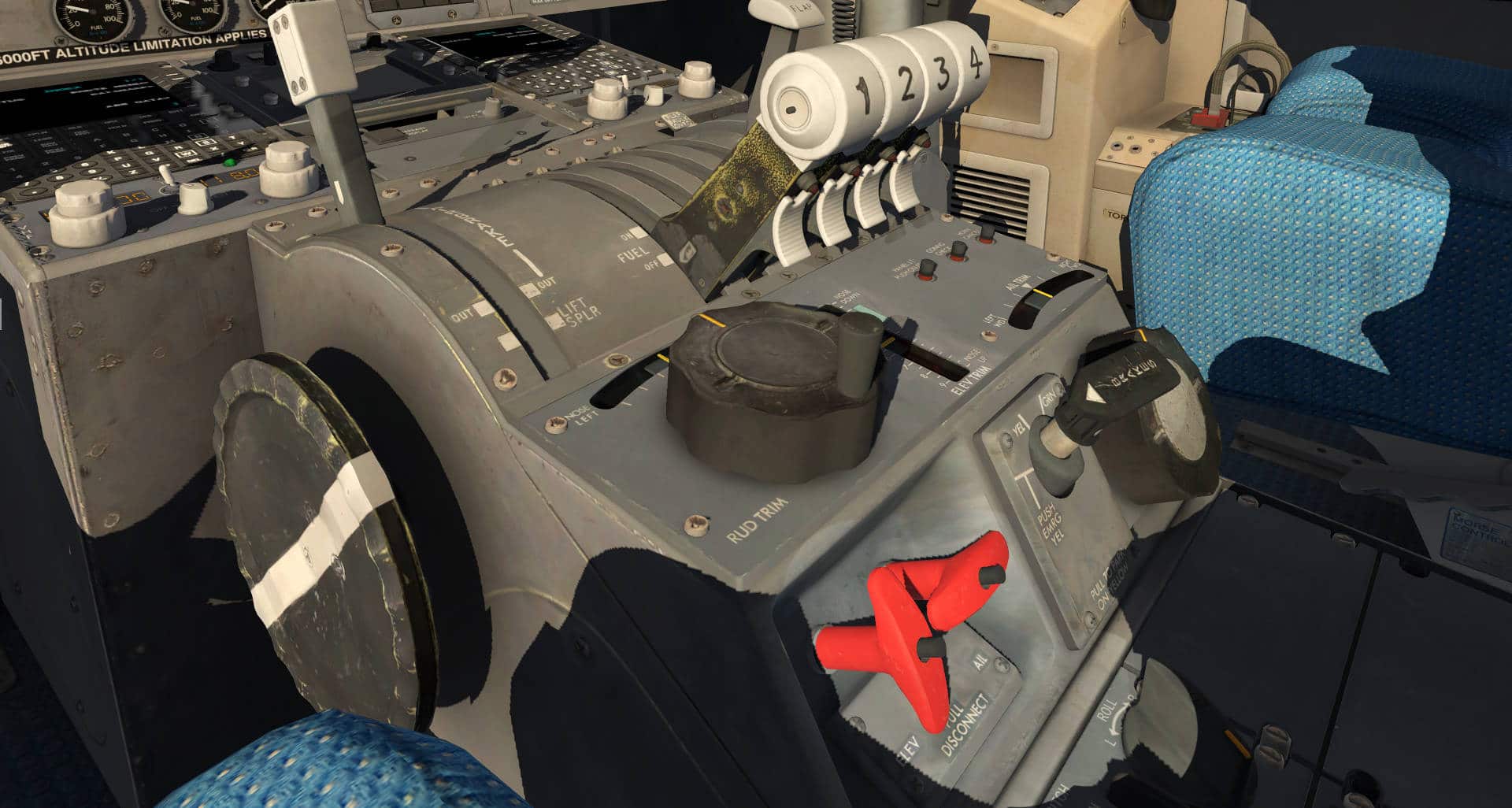
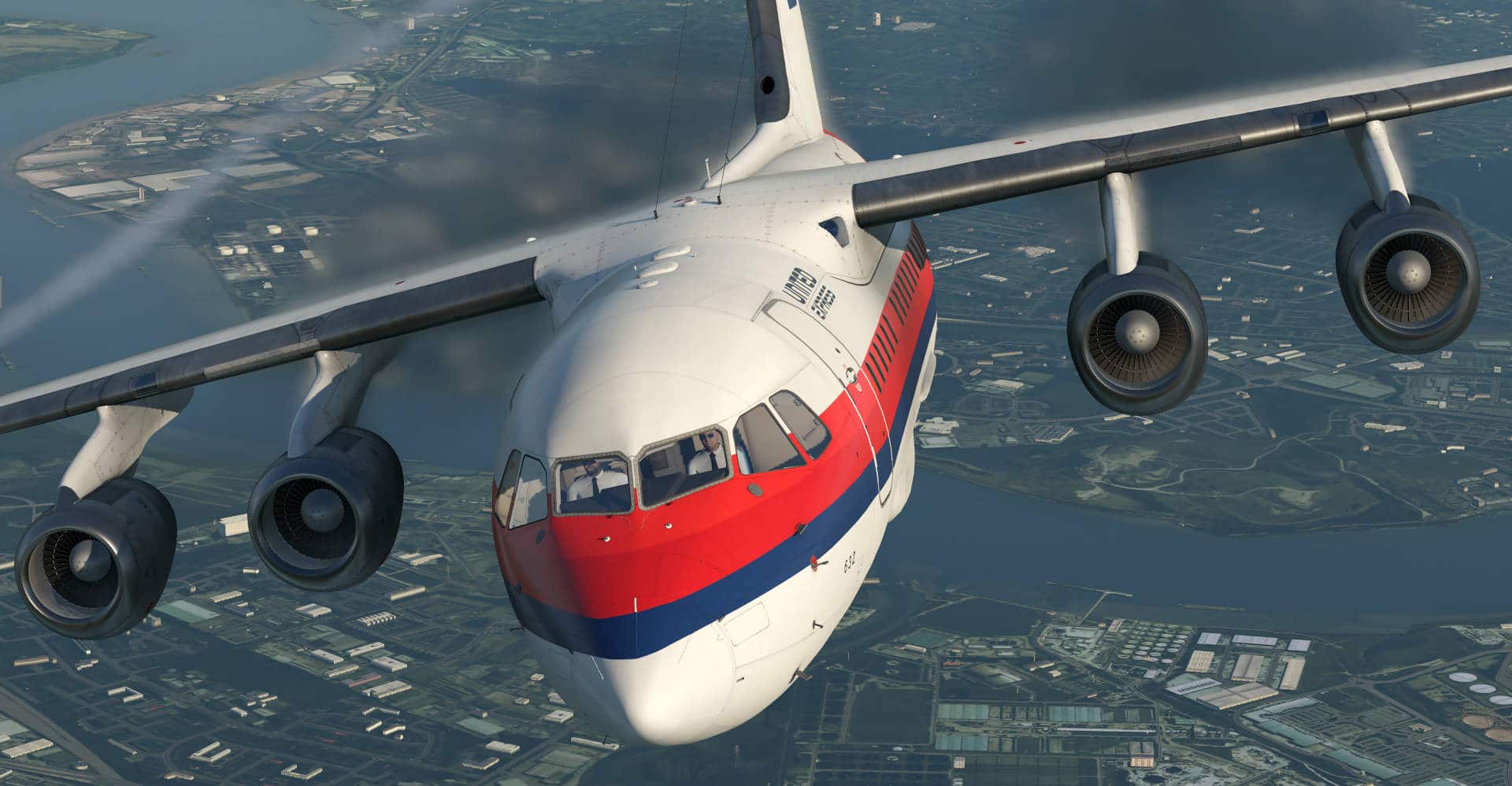
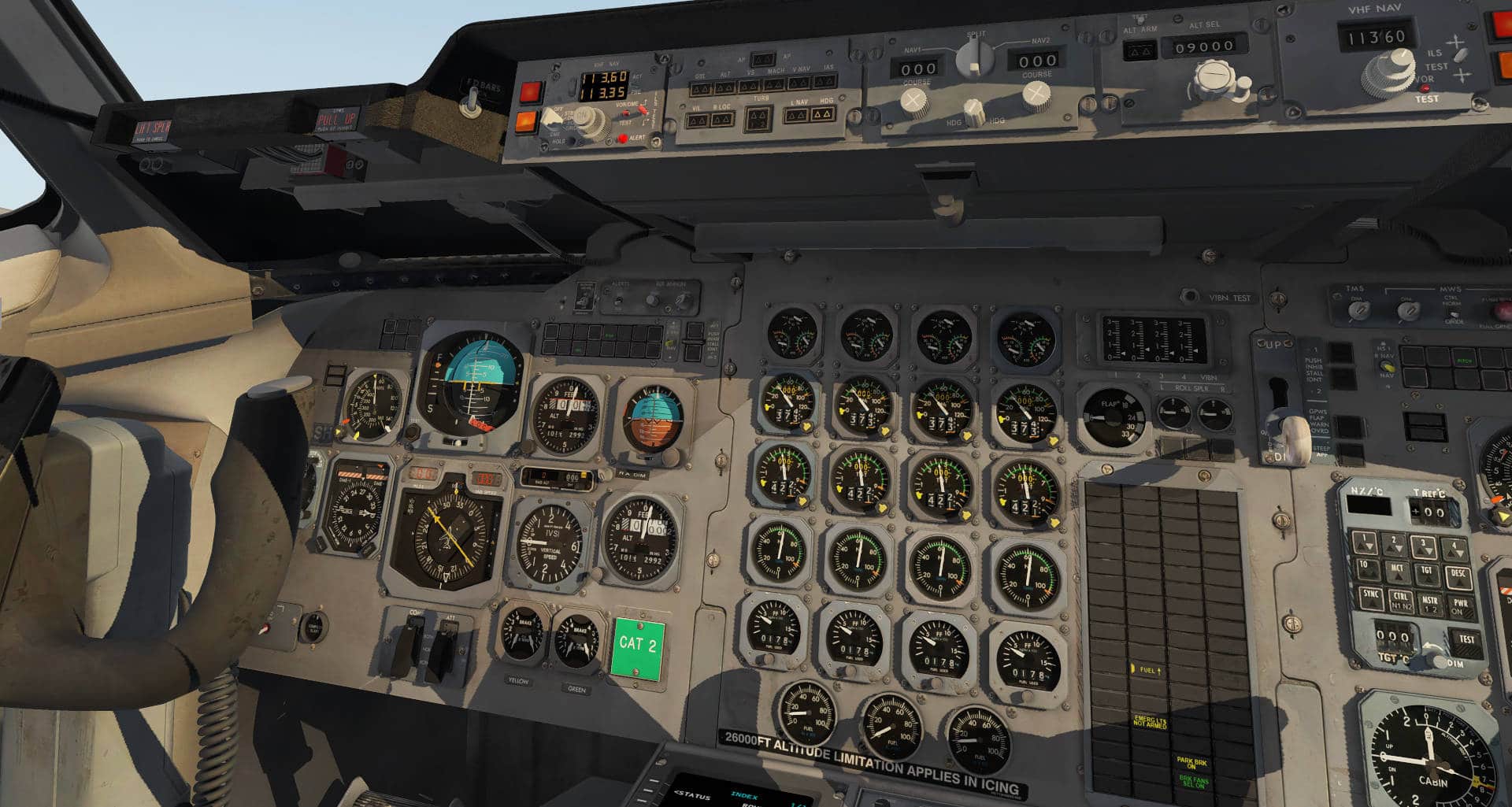
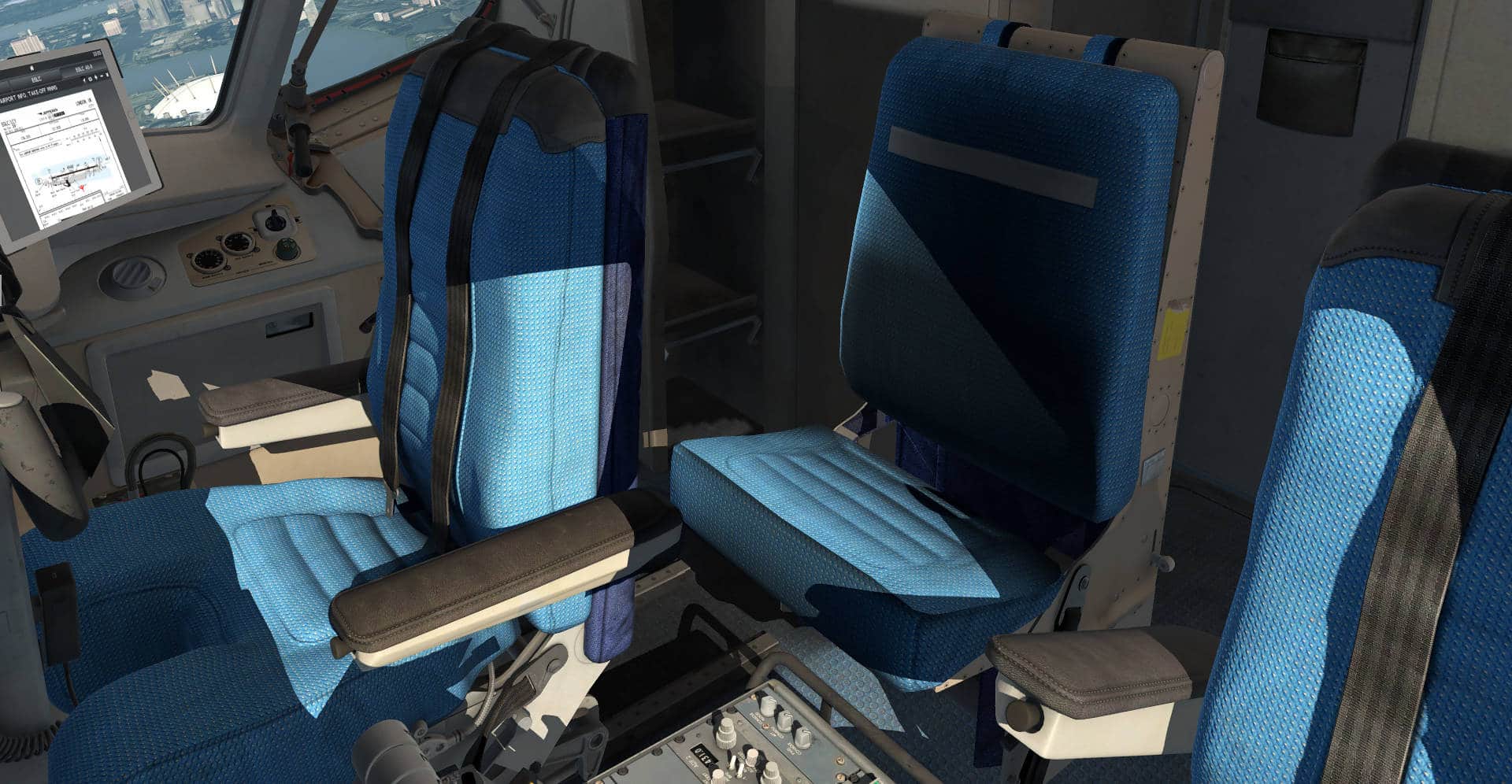
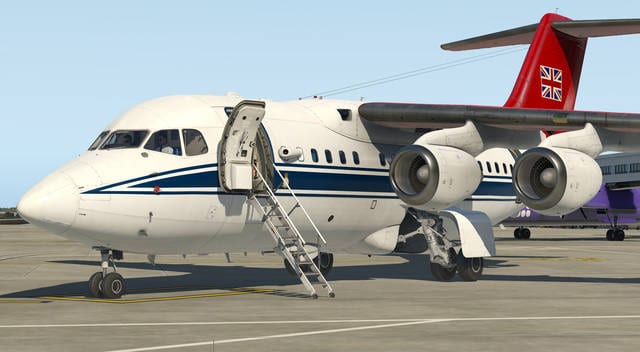
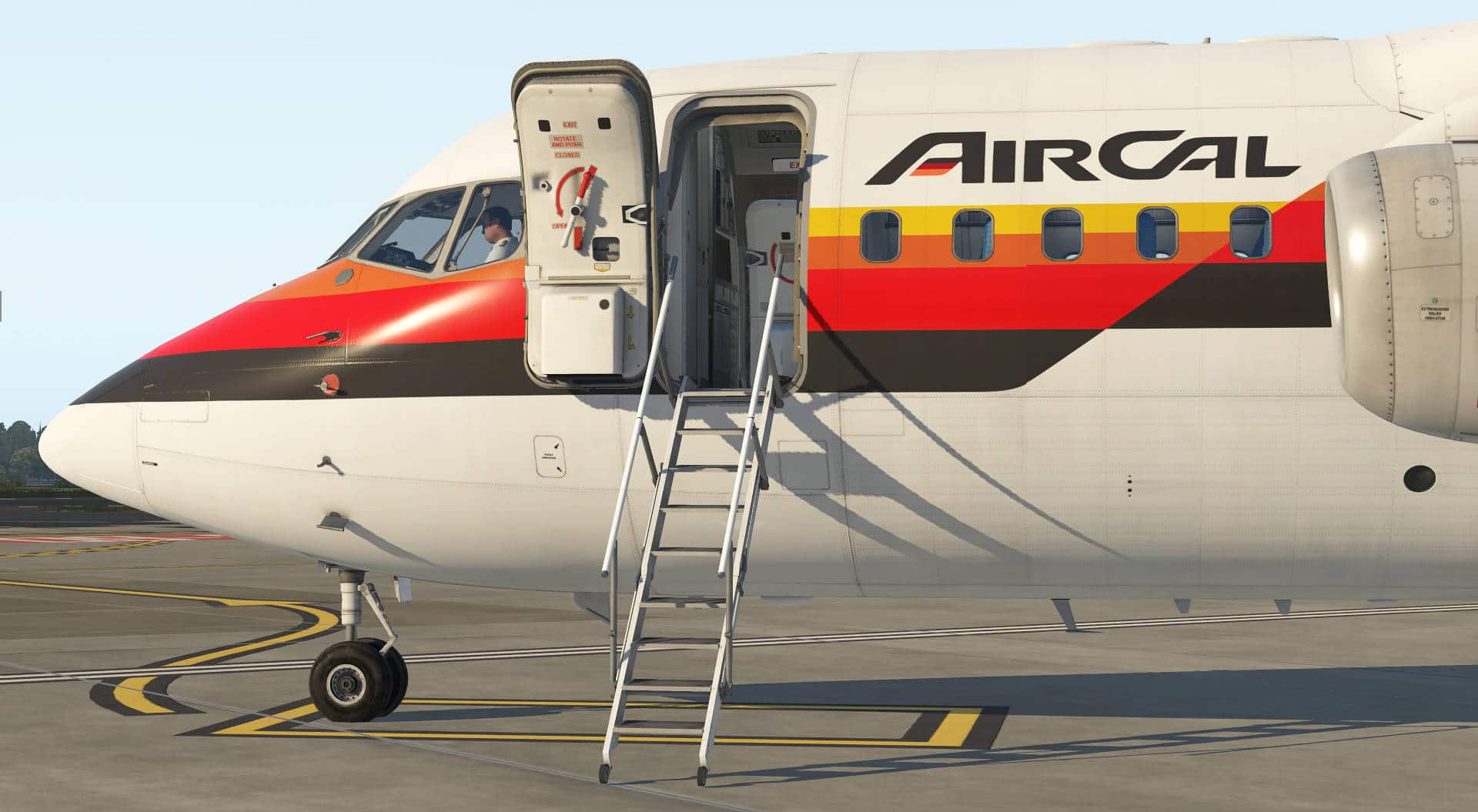
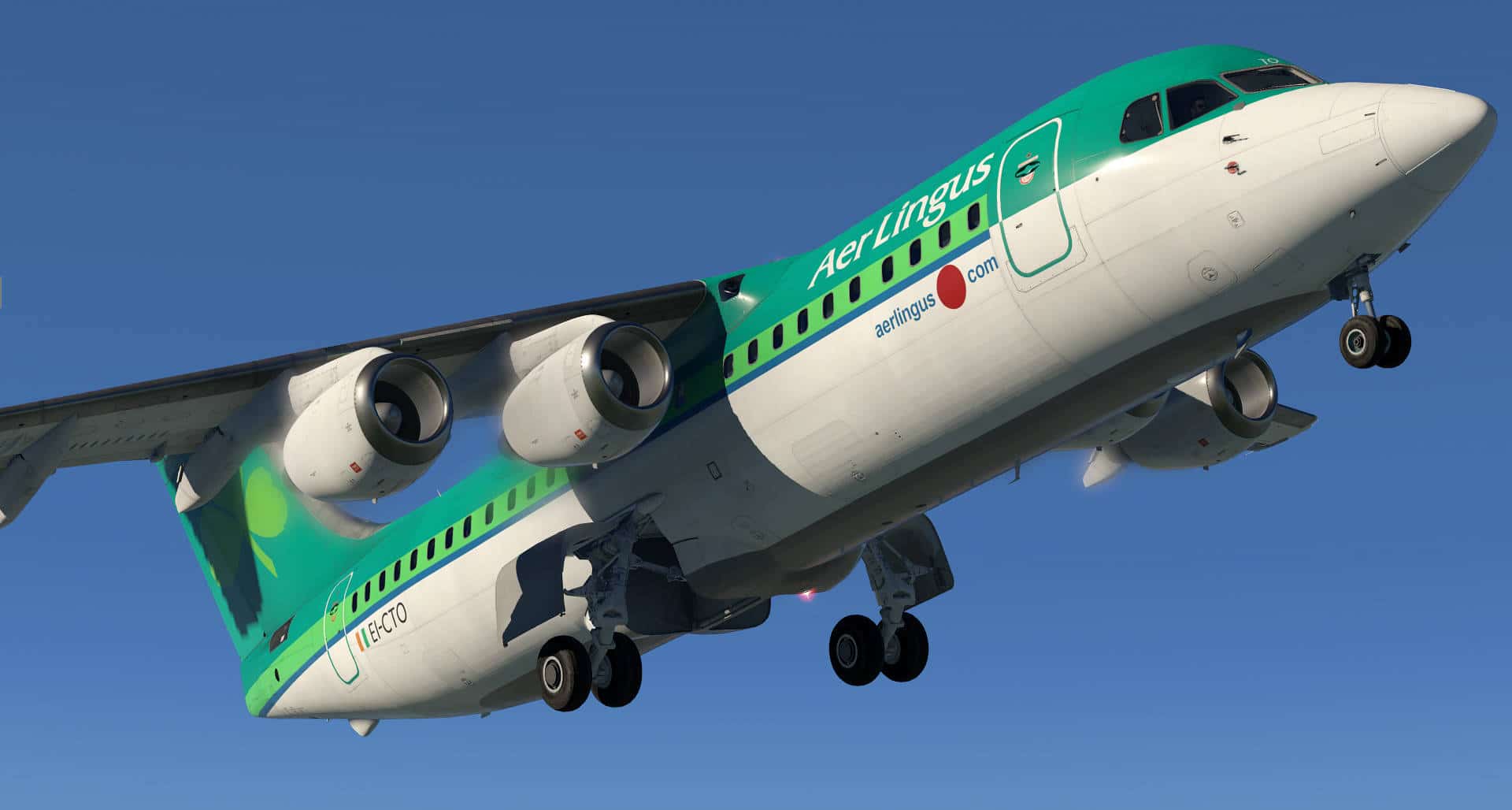
Review BAe 146 für P3D
Features:
MODEL
- Eight variants of the 146 are included:
– 146-100
– 146-200
– 146-300
– 146-200 QC & QT (cargo)
– 146-300 QT (cargo)
– CC.Mk2 (RAF VIP configuration with countermeasure pods)
– C.Mk3 (RAF cargo configuration with countermeasure pods) - Accurately modelled using real-world aircraft plans and comprehensive photography of the real aircraft (G-JEAO, ZE701 and ZE708)
- Numerous animations including:
– Trailing edge flap surfaces
– Wing-mounted spoilers and tail-mounted airbrake
– Ailerons and elevators feature servo tabs, and balanced, free-floating control surfaces which are affected not only by oncoming air, but also by turbulence, side winds, up and down drafts etc. during taxi or low-speed ground operations
– All passenger, service and cargo doors use custom animations and featurr extra logic such as the auto-closure of doors above a certain speed
– Windscreen wipers with individual left/right animations and independent speed controls
– Distinctive retractable tricycle landing gear featuring complex trailing link shock-absorbing mechanism on the main gear
– Countermeasure pods, HF aerial and more
COCKPIT
- A truly 3D cockpit environment right down to accurately modelled seat belts and screw heads
- Cockpit textures feature wear and tear based on reference photos taken in the real aircraft to produce an authentic environment
- Captain, Co-pilot and jump-seat positions are modelled with hundreds of functional controls, including over 200 buttons, 100 switches and knobs, with smooth animations, easy-to-use clickspots and precision sounds
- Fully VR compatible
- Aircraft configuration system that will allow you to choose between ‚cold & dark‘ or ‚engines running’. These configurations can be customised via the Manifest.json file.
- Custom throttle lever logic – fuel latch logic which is compatible with hardware (avoiding jitters due to conflicting throttle positions), cutomisable variation in throttle positions for added realism, clickspot for controlling all four levers simultaneously etc.
- Functional crank handles on knobs such as the altitude select and rudder trim, which allow for more intuitive, realistic and quicker operation
- Full support for command assignments, hardware and cockpit builders:
– All controls can be assigned to commands, with tooltips on every clickspot to indicate which command to use
– Parameters such as smoothing animation, number of positions, attached dataref, push-button depth, knob rotation multiplier, frame-skip (for optimisation), default position etc. can all be customised via the Manifest.json file, providing great support for hardware and cockpit builders.
– Default commands for landing and taxi lights, windsscreen wipers, panel lights etc. are still respected, despite being implemented with custom functionality - Custom features such as ‘hide yokes’ are controllable using default commands (e.g. ‚Hide Yoke‘) as well as via clickspots
- EFB tablet with door and call-out controls and with AviTab support
TEXTURES AND LIVERIES
- Physical Based Rendering (PBR) materials produce realistic metallic, plastic and glass surfaces. Certain liveries feature more metallic or more rough finishes to match the real-world materials on a per-livery basis.
- 4096×4096 textures are used to produce the highest possible texture clarity (external texture pixel density exceeds 330 pixels/m, very high for an airliner)
- X-Plane texture quality slider reduces texture dimensions and compresses textures in-sim in real-time, but textures that are crucial for hi-res clarity and legibility are protected from resolution degradation at lower graphic settings
- Authentic labelling and placards based on those found in the real aircraft
- The 3D model intelligently re-uses the same parts between aircraft variants, reducing download size and optimising in-sim resource usage.
- The numerous optimisation measures made to the aircraft’s geometry, such as unloading parts that are not in view, contribute to the aircraft’s FPS-friendly performance (in-house tests consistently yield between 70-135 FPS)
- Ground vehicles (X-Plane default) available at supporting airports.
Included liveries
34 liveries plus one default (blank) livery are included:
146-100
- Air France Express (G-JEAT)
- AirUK (G-UKPC)
- British Aerospace demonstrator (G-SSSH)
- Dan-Air London (G-BKMN)
- Formula One Flight Operations (G-OFOM)
- Jersey European (G-JEAO)
- Pacific Southwest Airlines (N246SS)
- United Express (N463AP)
146-200
- AirCal (N146AC)
- Air Canada Jazz (C-GRNZ)
- American Airlines (N699AA)
- Continental Express (N406XV)
- QantasLink (VH-NJJ)
- SN Brussels Airlines (OO-DJJ)
- USAir (N165US)
146-200QC
- TNT Airways (OO-TAZ)
- Titan Airways (G-ZAPK)
146-200QT
- TNT Airways 1990s (G-TNTA)
- Ansett Australia Airlines Cargo (VH-JJZ)
- Titan Airways (G-ZAPR)
146-300
- Aer Lingus (EI-CTO)
- Air New Zealand (ZK-NZN)
- Ansett Australia (VH-EWM)
- Astra Airlines (SX-DIZ)
- British Airways (G-OINV)
- Flybe (G-JEBC)
- KLM UK (G-UKAC)
146-300 QT
- ASL Airlines (EC-MID)
- Australian Air Express (VH-NJM)
- TNT Airways (OO-TAD)
CC.Mk2
- RAF Statesman modern (ZE701 – Queen’s Flight)
- RAF Statesman 1980s (ZE701 – Queen’s Flight)
C.Mk 3
- RAF (ZE708)
SOUNDS
- Studio quality Lycoming ALF-502 engine sounds, recorded from RAF C.Mk3 ZE708
- Over 450 flight deck sound effects recorded from RAF CC.Mk2 ZE701
- Detailed audio equipment such as the APU, brake fans, electrical circuits, hydraulic equipment and much more
- Distinctive flap retraction/extension airflow ‚howling‘ sound
- More than 520 sounds samples in high definition with accurate 3D placement. Pushing the limits of FMOD 1.08 sound system with more than 150 sound tracks being played at the same time with no virtualisation.
- Full 7.1 surround sound support via FMOD, with 3D positional sound for VR users
- Extremely detailed external sound system:
– Takes into account distance, speed, altitude, temperature and air pressure, just like in real life
– Accurate touchdown sound based on impact speed
– Multi-directional sound during fly-by and camera location on external view
– Realistic runway roll sounds, complete with periodic bumps that depend on lateral runway position
– Realistic wind sound that reacts not only to the speed of the aircraft but also how the wind is interacting with the fuselage (AoA, side slip etc.)
– Realistic ambient sounds which replaces the default X-Plane sounds with a high fidelity FMOD sound system recreating the atmospheric effect, such as rain, birds, thunder etc. - Interior and cabin sounds:
– Passenger sounds, based on aircraft weight, which react according to your flying style. Passenger cabin sound changes as you move around, as if you were inside the real plane.
– If the pilot view is on the pilot’s side the system volumes (COM, NAV and marker volumes) will match the pilot audio selector volumes. If the camera is on the co-pilot’s side, they will follow that audio control panel.
– Co-pilot call-outs during all phases of flight, from take-off to landing
– Realistic cabin crew sounds that can be triggered via the EFB tablet
– Cockpit door effect that changes the in-cockpit atmosphere/echoes/resonances sounds
– Structural sounds are simulated, reacting to G-load and turbulence
– Accurate wing buffeting sound when approaching stall - Attention to detail, such as ratcheting knob sounds that aren’t simply loop-based, but rather follow the detents or ratchets of the knob, or toggle buttons that push slightly further in before settling into their toggled position.
- Accurate engine start-up, cockpit systems and radio interference sounds and more, with over 6,000 lines of code for the sound system and over 170 different layered sound classes and behaviours!
FLIGHT DYNAMICS
- Developers worked closely with real BAe-146 pilots to capture the feel of the real aircraft’s flight behaviour
- Cruise speeds precisely tuned to the real aircraft’s performance charts
- Accurate pitch attitudes based on configuration and weight, which allow for the characteristic slight-nose-down attitude at approach speeds
- Accurate engine thrust curves and drag profiles allow realistic time-to-climb times and performance
- Powerful flaps that require re-trimming while extending and retracting, just like in the real aircraft
- Accurate pitch trim values for take-off with custom inertial rotation values, to get the feel of the plane just right in flight (with different values for 100, 200 and 300)
- Take-off and landing speed card which automatically displays reference speeds depending on current aircraft weight
- Realistic weight and balance that affects aircraft handling and performance
- Set the number of passengers, cargo weights and fuel weights using the EFB tablet
SYSTEMS
Custom-coded aircraft systems with a high degree of complexity and depth, including:
Air-conditioning and pressurisation system:
- Automatic and manual pressurisation modes with control of outflow valves, barometric and cabin rate settings, indications and cabin altitude warnings
- Cabin altitude and differential values based on real-world data
- Automatic and manual flight deck and cabin temperature control, which takes account of ambient temperature, air supply from the engines and/or APU, fresh or recirculated air and even whether the doors are open!
Auto-flight system:
- Autopilot and flight director system with multiple modes:
– Pitch – altitude arm and hold, vertical speed, IAS, Mach, glideslope and go-around
– Roll – VLOC, BLOC, LNAV (FMC) and HDG
– Turbulence mode
– Pitch and bank selection and hold
– Sync mode for quick changes to aircraft attitude
– Fully functional mode annunciations, engagement and disengagement criteria (including roll and pitch rate cut-out and stall cut-out) and integration with ADI and HSI - Simulated CAT 2 approach monitoring system
Flight Management Computer:
- Custom FMC coming soon!
- X-Plane’s default FMC with a custom 3D mesh
- Supports arrival and departure procedures (SIDs and STARs) and instrument approaches
- Supports pop-up and pop-out windows (use on a separate monitor or tablet)
- Supports VNAV mode
Communication system:
- Dual VHF COMM, NAV and ADF radios
- Cockpit voice recorder test and indication systems
- Functioning audio selector and PA chime
Electrical system:
- Independent engine, APU and external power (AC and DC) sources
- Generator and TRU loading, and automatic load switching
- Standby generator and inverter power sources for non-normal procedures
- Independent AC channels, including normal, essential and emergency busbars, and bus-ties facilities
Fire protection system:
- Engine, APU and fuselage fire detection and warning systems
- Engine fire extinguishing system
- Fully simulated test functionality
Flight controls:
- Servo-tab simulation, taking into account winds, microbursts, and turbulence: elevator and aileron surface position is dependent on servo-tab control inputs and air flow over the surface
- Iconic tail-mounted clamshell air brakes, roll and lift spoilers with independent hydraulic sources, realistic deployment times and custom AC and PTU pump sounds
- Flight control disconnect functionality
- Accurately simulated flap system with hydraulic and electrical power sources, baulk override, fault testing and iconic howl when deployed in the air
- Stall identification and warning systems, including stick shaker and pusher, and inhibit mode
- Simulated configuration warning system
Fuel system:
- Realistic fuel load and burn based on real-world data
- Simulated electrical normal and hydraulic standby fuel pumps, centre and wing tanks with feed tanks for each engine, and LP and HP fuel cocks
- Fully functional centre-to-wing fuel transfer, cross-feed and common-feed valves
Hydraulic system:
- Independent Yellow and Green hydraulic systems with realistic pressure, quantity and supply to other systems
- Simulated AC- and DC-driven back-up pumps and power transfer unit (PTU)
- Functional standby generator for supplying AC and DC electrical power in non-normal situations
Ice and rain protection system:
- Ice detection and accumulation simulation, anti-icing and de-icing functionality for exterior surfaces, warning systems for in-flight monitoring
- Simulation of separate inner and outer wing anti-icing and windscreen overheating
Indicating and recording systems:
- A vast array of annunciators, including accurately simulated Master Warning System (MWS) with amber and red cautions, audible warnings and ground testing for all systems
- Flight Data Entry Panel (FDEP) for entering flight details (date, flight leg and number)
Landing gear:
- Normal and emergency gear extension, including gear down-lock override
- Gear configuration indication and warning systems
- Simulated brake accumulators supplied via the hydraulic power sources (Yellow or Green), anti-skid and brake temperature indicator with cooling down periods that are affected by ambient temperature, brake usage and brake fans
- Captain and First Officer tillers for realistic nose-wheel steering
Navigation systems:
- Transponder with TCAS (integrated with VSI TCAS display) and flight ID input functionality
- Dual RMI/DBI and HSI navigation instruments, fed by two NAV and ADF radios
- Instrument source selector for NAV 1, NAV 2 or dual navigation via the ADI, HSI and auto-flight system
- Choice of traditional or TCAS VSI
- Fully functioning test modes on navigation instruments (e.g. HSI, radio altimeter and ADI)
- Weather radar
- Custom-coded GPWS with modes 1-6, steep approach mode, flap warning override and test functionality
Oxygen system:
- Flight crew and passenger oxygen systems with valve and mask deployment controls
Pneumatic system:
- Realistic bleed air demand from engines and APU, and pneumatic supply to air-conditioning and ice protection systems.
APU:
- Realistic APU start and shutdown procedures and bleed air and electrical power supply
- RPM, TGT and fuel burn values based on real-world data
Doors and stairs:
- Animations panel for controlling passenger and service doors, lower cargo doors and fuselage cargo door (QT/QC only)
- Deployable airstairs, powered by AC hydraulic system
Power plant:
- N1, N2, TGT, oil pressures and temperatures will all differ subtly between engines (customised via the Manifest.json file – ‚RandomEngineThrottleVariation‘)
- Accurately simulated Thrust Modulation System (TMS) with take-off (full or flexible), maximum continuous thrust, TGT and descent modes. Takes account of engine bleed air requirements, e.g. for to air-conditioning and ice protection systems.
- Realistic engine start procedures with external, APU or cross-start sources
- Simulation of ground and flight idle baulks
- Take-off and landing speed card which automatically displays reference speeds depending on current aircraft weight, and settable airspeed indicator and engine instrument bugs
Lighting:
- Full HDR lighting with gimballed lights that can be aimed and dynamically illuminate whichever part of the cockpit is aimed at
- Independent lighting controls for Captain and First Officer
- Dimmable integral lighting for each panel, accurately dependent on corresponding electrical bus
- Dimmable dynamic flood and storm lighting for a highly immersive and customisable night environment (more than 12 individual light sources including entry, lap, sill and flight kit)
- White and red flashlight for night operations
- Accurately simulated exterior lighting including dynamic wing, logo and runway exit lights, and taxi/landing and navigation lights with different intensities
- Strobe lights with customisable strobe flashing pattern
- All exterior lights, including navigation, strobe, ice, exit, logo, landing, taxi and beacon lights are fully HDR with dynamic spill light, illuminating ground and scenery objects, as well as the aircraft itself.
OTHER FEATURES
- Comprehensive manual with tutorial, FMC guide, procedures, limitations and handling notes
- Payload manager for realistic fuel and passenger loads
- AviTab (third party tablet plugin) compatibleGoodway compatible
- Multiple interior and exterior viewpoint presets
- PSD paint kits included (free separate download) so you can create your own paint schemes

